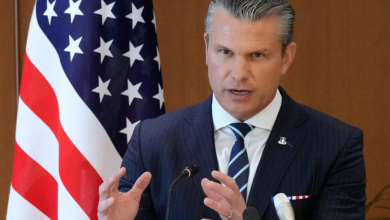If NAFTA fails, Latin America wins
What are Canada and Mexico’s backup plans?

Leer en Español: La inminente caída de NAFTA beneficiaría a América Latina
World trade must work as “smoothly, predictably, and freely as possible”, claims the World Trade Organization. In this spirit, the overall idea of trade rests on mutual respect and cooperation between nations.
Canada, Mexico, and the United States of America formed NAFTA back in 1994; the treaty for the North American nations has benefitted the US more than it has benefitted its neighbors. Nevertheless, it has brought extended immigration.
Donald Trump’s speech in the United Nations General Assembly was insistent on a new global governance perspective where the role of the United States shifted from being a pivot point for the world to one where every country should work for its own interest while the North American nation only serves as an example to follow, if desired.
Following the disruptive comments from the American representative, members of NAFTA behaved rationally by examining alternatives to substitute the loss in surplus that the fractured relations with the North American superpower could leave behind.
Read also: Mexico thinks of a world without NAFTA
Mexico has been quick to react to the downfall of NAFTA. Its main possibility to substitute the potential lost production resides in a strong emphasis towards the forming Pacific Alliance from Latin America. Said coalition involves Mexico, Chile, Colombia, and Peru; together they account for 50% of trade in the region and 38% of its GDP.
By turning its attention to the south, Mexico will be able to foster a block of nations with inherent richness and excellent governance, if Chile’s example is followed. The block itself is composed of free market nations that are looking forward to expand their presence throughout the world.
Canada’s main trade partner is the United States. In 2016 alone, the northernmost country in America bought $12.5 billion dollars’ worth of goods from its only geographic neighbor; Canada is the country that buys the most goods coming from the US.
Read also: Cancelling NAFTA would be lost opportunity for 3 countries
The shift in the 50-state union has turned Canada’s economic mindset towards a stronger Trans-Pacific Partnership. The association includes Australia, Brunei, Darussalam, Canada, Chile, Japan, Malaysia, Mexico, New Zealand, Peru, Singapore, and idle United States.
The treaty was signed on February 4th, 2016 affecting quotas and free-trade policies among the countries. Said agreement represents 40% of the world’s economic output and will affect 800 million people, twice as much as the European Union single market.
Latin American Post | David Eduardo Rodríguez Acevedo
Copy edited by Susana Cicchetto





